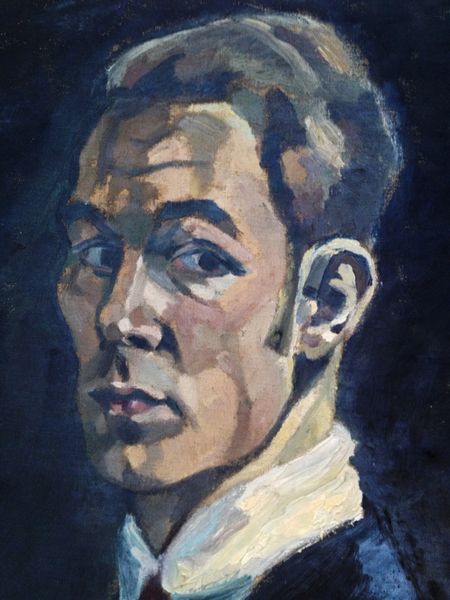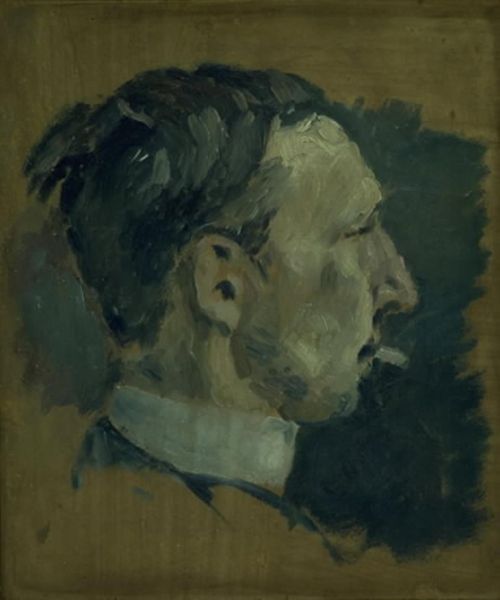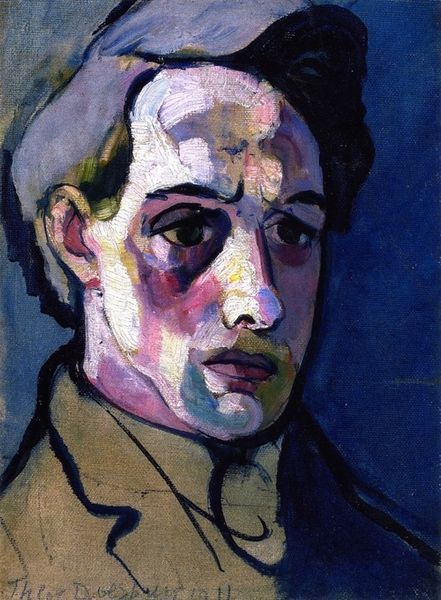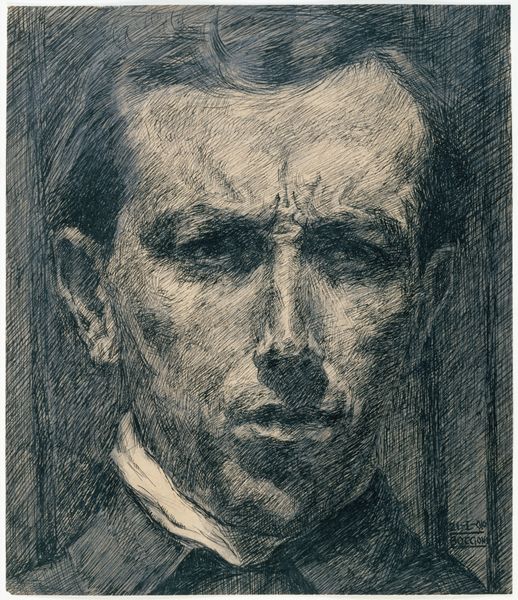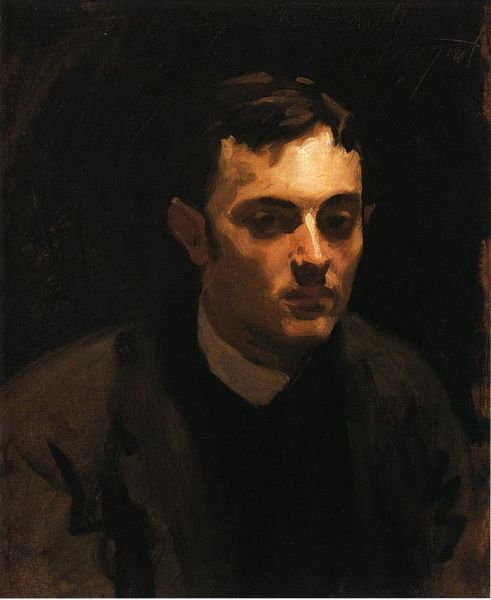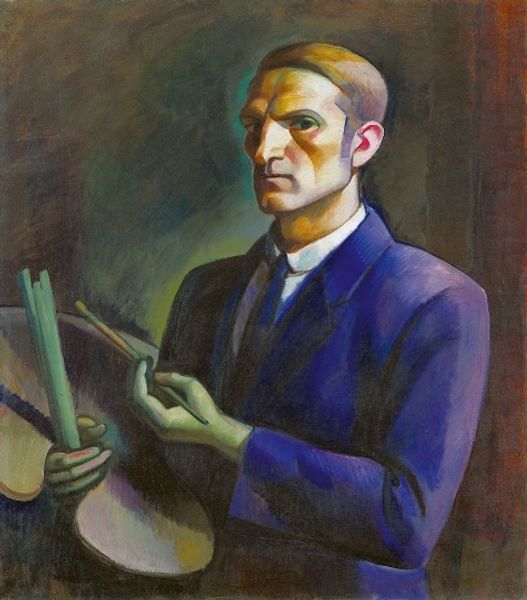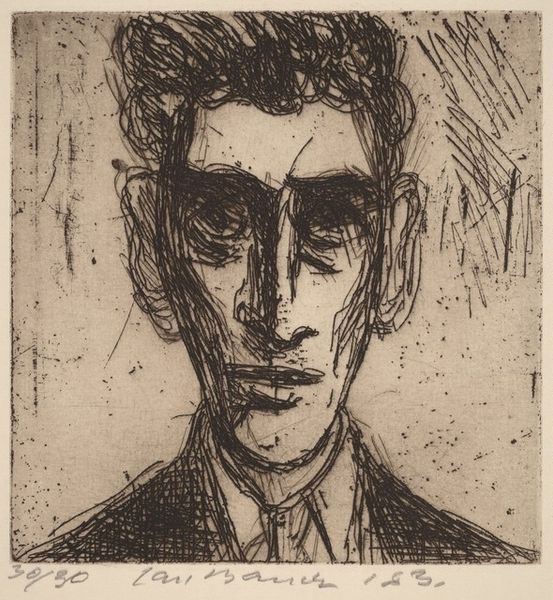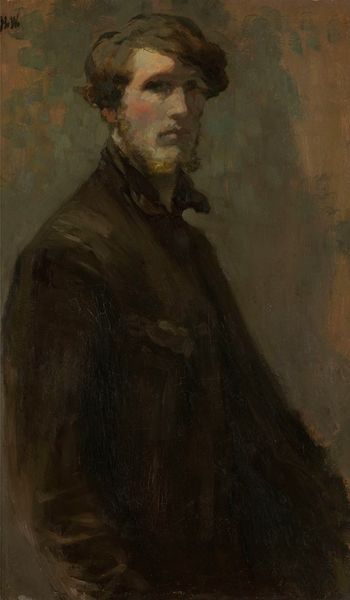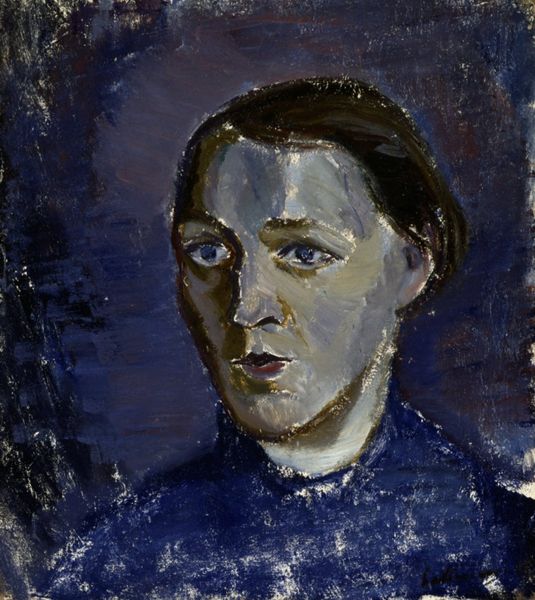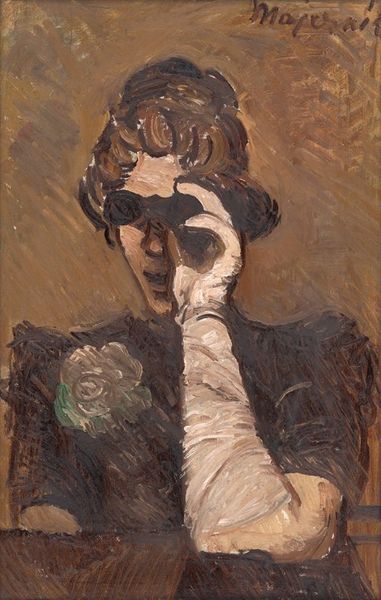
oil-paint
#
portrait
#
figurative
#
self-portrait
#
oil-paint
#
figuration
#
oil painting
#
expressionism
#
portrait drawing
Copyright: Public Domain: Artvee
Editor: Here we have Léon Spilliaert's "Autoportrait," an oil painting. There's a haunting quality to it; the restricted palette and stark contrast create an unsettling mood. What elements of its construction strike you? Curator: The formal organization is certainly compelling. Observe how Spilliaert employs a limited range of ochre and umber tones. The severe contrasts sculpt the face, highlighting bone structure while plunging areas into shadow. Note also the impasto, visible in the background, juxtaposed with the smoother treatment of the face. The application draws attention to the materiality of the oil itself. Editor: Yes, that stark contrast is so striking! But what is the purpose of this dramatic interplay of light and shadow? Curator: Consider it as a formal device. The chiaroscuro doesn't merely depict light; it's structurally integral. It creates volume and spatial recession, giving form to psychological depth. The shadows seem to possess an autonomous presence, almost as important as the illuminated features. Are they purely representational? Or do they imply a split self? Editor: It almost feels like he's trying to both reveal and conceal himself simultaneously. I see it! Looking closely, there’s this buildup of paint, this heavy impasto—which makes the flatness and dissolution of the dark tones around the subject more evocative. I'd never have considered that duality. Curator: Precisely! The material facts—the paint itself, the way it's applied—shape how we apprehend not only the subject but the very idea of "self". The artist seems to interrogate the limits of representation and explore identity as a composition of light and shadow. Editor: I appreciate how you connected those technical aspects to the subject. I see how the medium becomes part of the message!
Comments
No comments
Be the first to comment and join the conversation on the ultimate creative platform.
